Peru archaeology: Ancient mummy found under rubbish dump
- Published
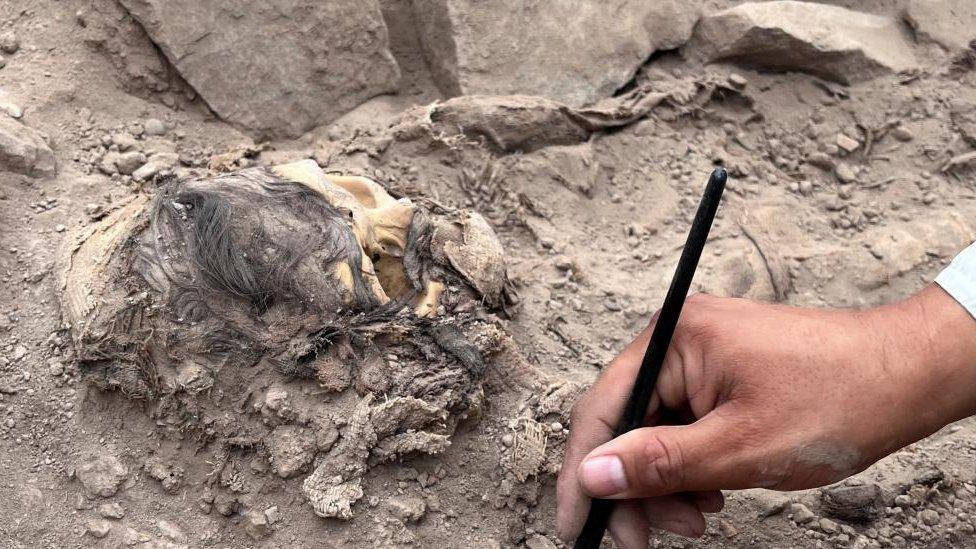
Archaeology students discovered the mummy during a dig in Lima
Archaeologists in Peru conducting a dig at the site of a rubbish dump in the capital Lima have found a mummy they think is around 3,000 years old.
Students from San Marcos University, who are helping with the dig, first spotted the mummy's hair and skull.
Archaeologist Miguel Aguilar said they had removed eight tonnes of rubbish from the location before their careful search for historic remains began.
The mummy is thought to date back to the times of the Manchay culture.
The Manchay lived in the area around modern-day Lima from around 1500BC to 1000BC.
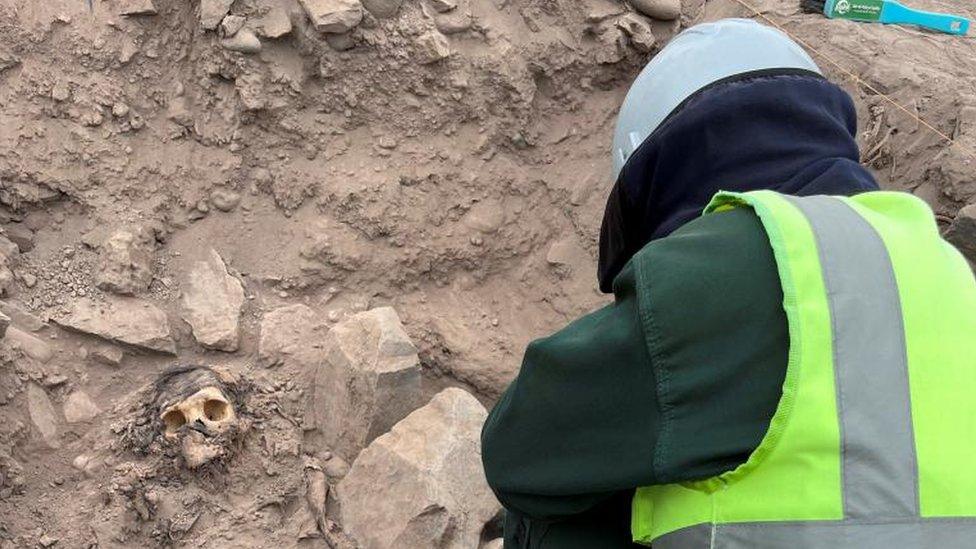
The body had been laid out flat inside a U-shaped temple
They are known for building U-shaped temples oriented towards the rising sun.
Mr Aguilar explained that the mummy had been placed in a tomb in the centre of such a U-shaped temple. He said the body had been laid out flat, which is characteristic for the Manchay culture of the "formative era", around 3,000 years ago.
The body was wrapped in cloth made from cotton and vegetable fibre.
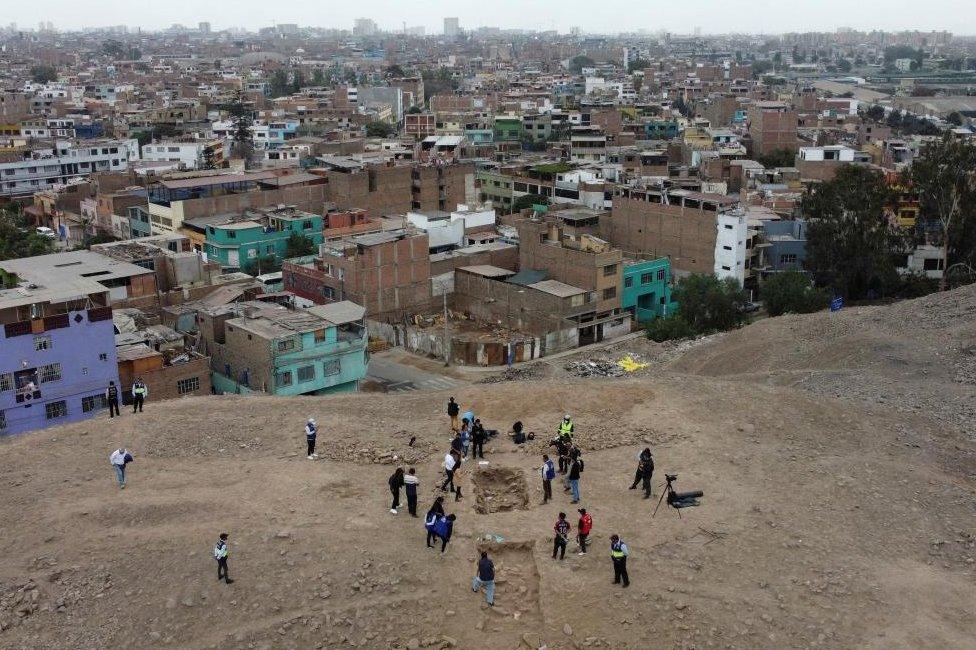
The archaeological site was underneath a rubbish dump in the Rímac neighbourhood in the capital, Lima
The archaeologist said that the person "had been left or offered [as a sacrifice] during the last phase of construction of this temple".
Mummification was practised by a variety of cultures in what is now Peru before the arrival of the Spanish conquistadors - people who travelled to the Americas as part of the Spanish conquest.
Some mummies were buried, many in a foetal position, while others were brought out and paraded during key festivals.
Related topics
- Published28 February 2023
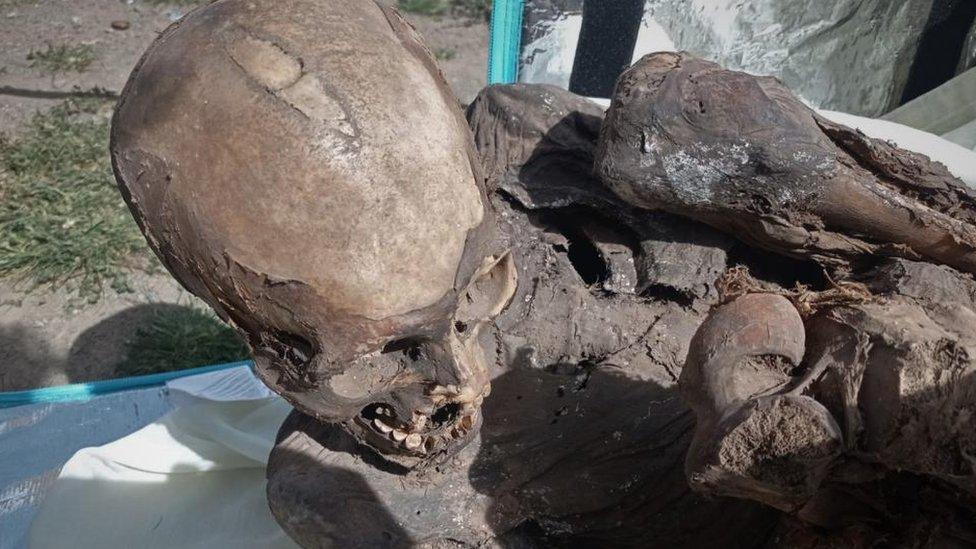
- Published27 November 2021
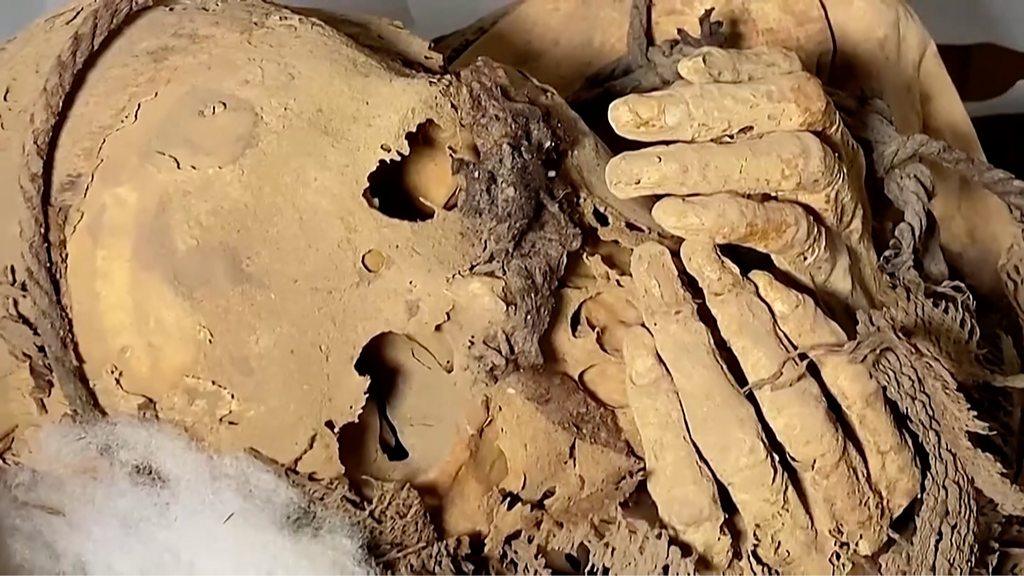
- Published11 November 2021
